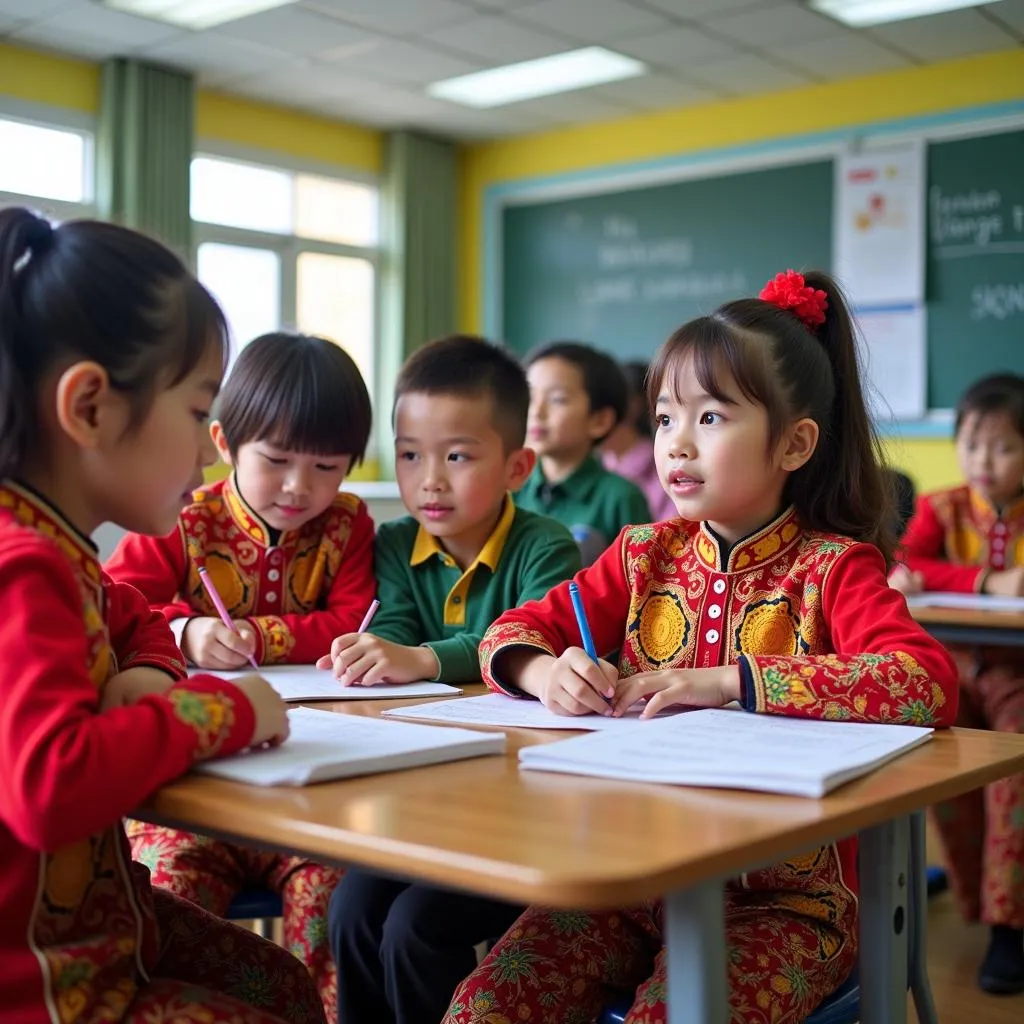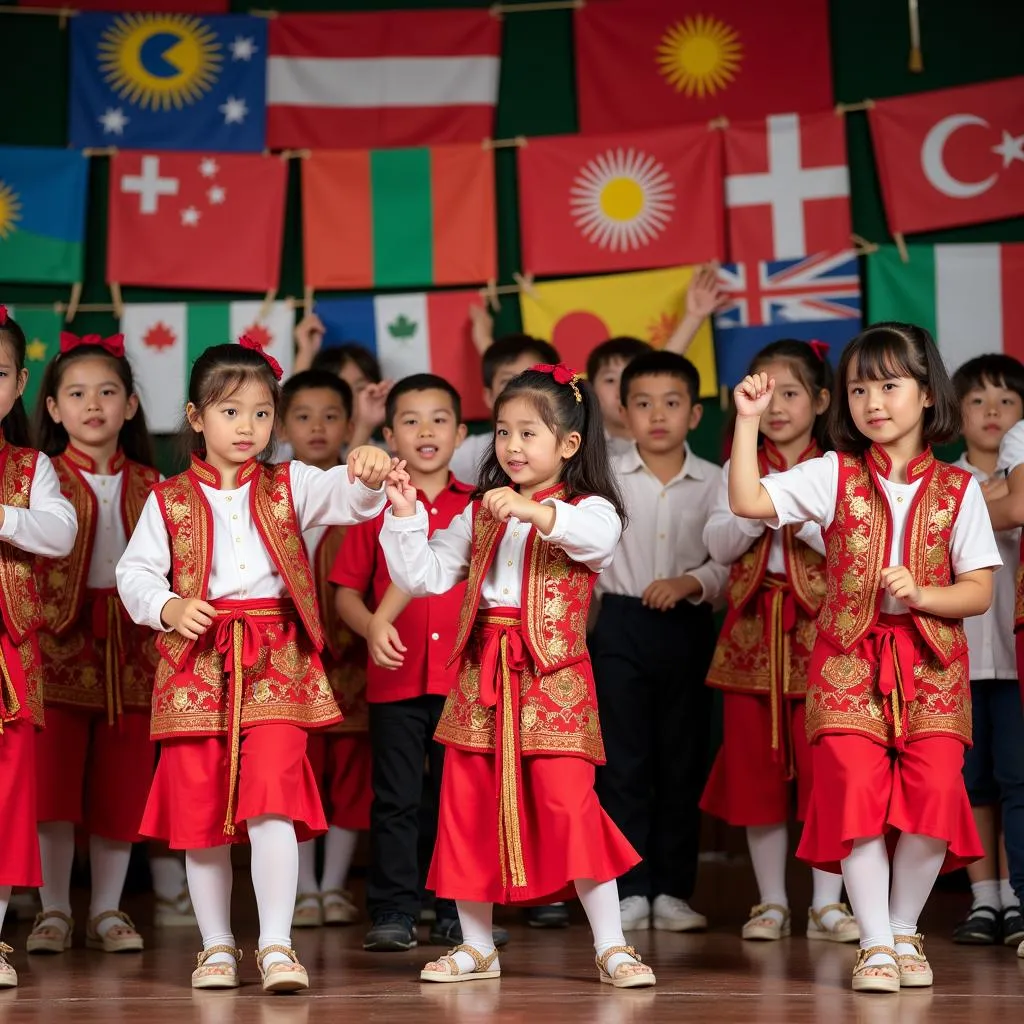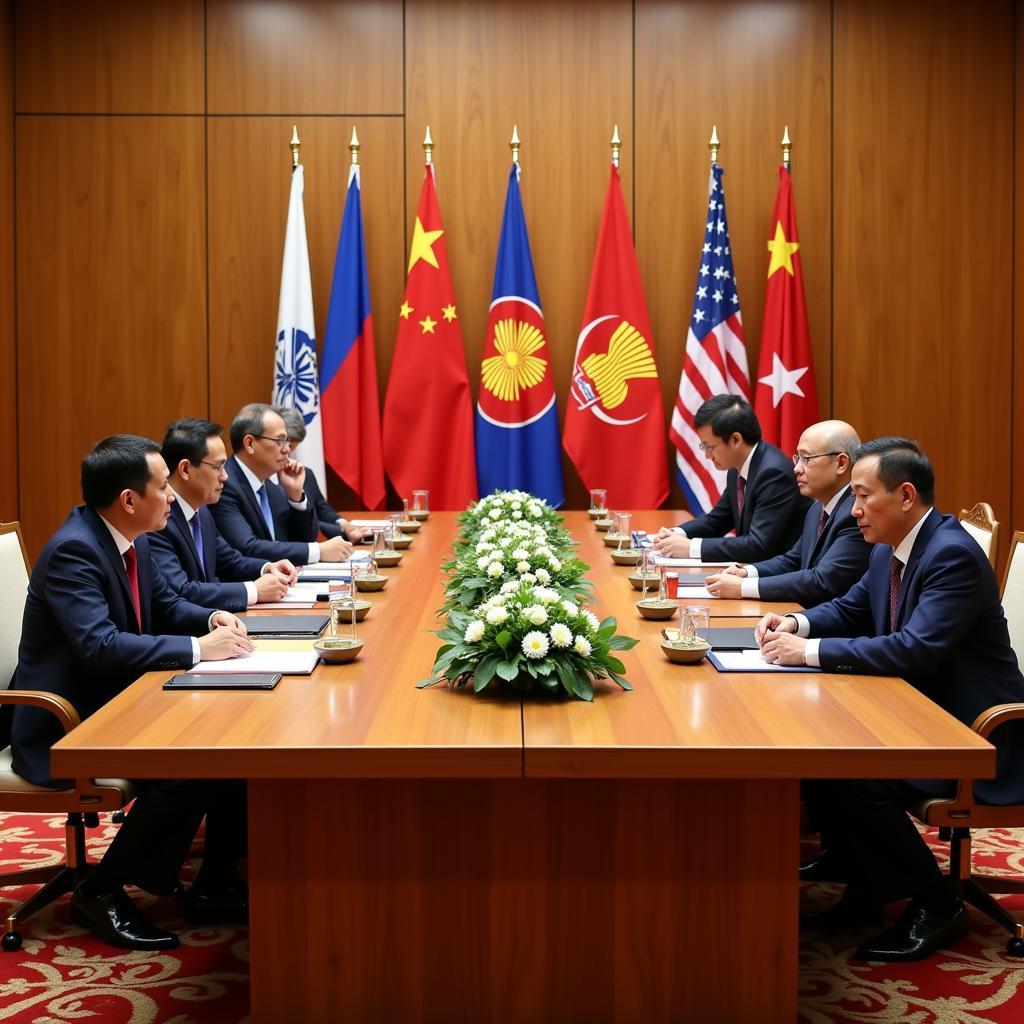ASEAN elementary schools offer a fascinating blend of cultural influences and educational approaches. From the bustling classrooms of Singapore to the serene landscapes of Laos, each country presents a unique learning experience. This exploration delves into the world of ASEAN elementary education, highlighting the similarities and differences that shape young minds across Southeast Asia.
 Diverse ASEAN students learning in a classroom
Diverse ASEAN students learning in a classroom
Curriculum Frameworks: A Common Foundation with Local Flavors
While ASEAN nations share a commitment to providing quality education, their curriculum frameworks reflect their distinct national priorities and cultural values. Most countries follow a national curriculum, ensuring standardized learning outcomes. For instance, Singapore emphasizes bilingualism and STEM education, while Vietnam focuses on national history and moral education.
However, within this framework, schools have the flexibility to incorporate local content and cultural elements. This localized approach fosters a sense of belonging and allows students to appreciate their heritage while gaining a broader ASEAN perspective.
Language of Instruction: Navigating Multilingual Classrooms
The linguistic landscape of ASEAN is incredibly diverse, with hundreds of languages spoken across the region. This linguistic richness presents both opportunities and challenges for elementary education. While the official language of each country typically serves as the primary language of instruction, multilingualism is a common thread in many schools, especially in rural and border communities.
Some countries have implemented bilingual or multilingual education programs to cater to diverse linguistic backgrounds. For example, Malaysia offers Bahasa Melayu and English as mediums of instruction, while Thailand encourages regional dialects alongside the national language. These programs aim to bridge language barriers and promote inclusivity.
Cultural Integration: Celebrating Diversity within the Classroom
One of the hallmarks of ASEAN elementary schools is the celebration of cultural diversity. From traditional dance and music lessons to national festivals and events, schools provide ample opportunities for students to learn about and appreciate the rich cultural tapestry of Southeast Asia.
Many schools organize cultural exchange programs, fostering cross-cultural understanding and friendship among students from different ASEAN nations. These experiences broaden horizons, promote tolerance, and nurture a sense of shared ASEAN identity.
 ASEAN students participating in a cultural event
ASEAN students participating in a cultural event
Challenges and Opportunities: Shaping the Future of ASEAN Education
ASEAN elementary education faces ongoing challenges, including disparities in educational access and quality, particularly in rural and marginalized communities. The region also grapples with a shortage of qualified teachers, inadequate infrastructure, and limited access to technology in some areas.
However, ASEAN nations are actively working to address these challenges and elevate the quality of education across the region. Initiatives such as teacher training programs, infrastructure development projects, and the integration of technology in classrooms are paving the way for a brighter future.
A Glimpse into ASEAN Elementary Schools: Nurturing Global Citizens
ASEAN elementary schools provide a unique window into the diverse cultural landscape and educational approaches of Southeast Asia. By embracing both national identity and regional cooperation, these schools are nurturing a new generation equipped with the knowledge, skills, and values to thrive in an interconnected world. As ASEAN continues to grow as a region, its elementary schools will play a crucial role in shaping a future where diversity is celebrated, and understanding paves the way for a more harmonious and prosperous tomorrow.
FAQ
What is the average class size in ASEAN elementary schools?
Class sizes vary significantly across ASEAN countries, ranging from around 20-25 students in Singapore to 40-50 students in some parts of Indonesia.
Is English widely spoken in ASEAN elementary schools?
English proficiency varies across the region. English is a compulsory subject in most ASEAN countries, and it’s widely spoken in Singapore and Brunei. However, in some countries, English proficiency may be limited outside urban areas.
What are some common extracurricular activities in ASEAN elementary schools?
Popular extracurricular activities include traditional dance and music, sports, art and craft, and academic clubs.
Need More Information?
For further inquiries about ASEAN education and cultural exchange opportunities, please contact:
Phone Number: 0369020373
Email: aseanmediadirectory@gmail.com
Address: Thon Ngoc Lien, Hiep Hoa, Bac Giang, Vietnam
Our dedicated team is available 24/7 to assist you.


